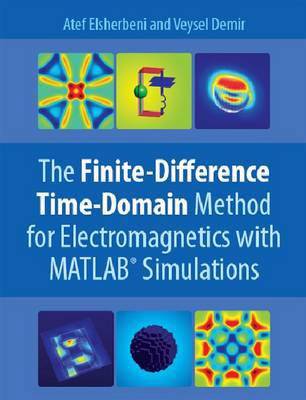
- Afhalen na 1 uur in een winkel met voorraad
- Gratis thuislevering in België vanaf € 30
- Ruim aanbod met 7 miljoen producten
- Afhalen na 1 uur in een winkel met voorraad
- Gratis thuislevering in België vanaf € 30
- Ruim aanbod met 7 miljoen producten
Zoeken
The Finite Difference Time Domain Method for Electromagnetics
With MATLAB Simulations
Atef Z Elsherbeni
Hardcover | Engels
€ 208,95
+ 417 punten
Omschrijving
The scope of the book is the fundamental techniques in the FDTD method. The book consists of 12 chapters, each chapter built on the concepts provided in the previous chapters. In each chapter the details of the concepts are discussed at a graduate student level. Using this book, students will be able to construct a program with sufficient functionally to solve some basic problems. The construction of final equations is presented with a detailed step-by-step approach. In most cases the full-set of equations are provided. While constructing the equations, the reader needs to visualize the positioning and orientation of field components in a three dimensional space. This is very difficult and usually requires extensive experience to be able to imagine the 3D space. Therefore, the book presents the construction of equations accompanied by a nice set of 3D illustrations. The figures greatly facilitate the understanding of the concepts. While the concepts are being presented, it has been kept in mind that the outcome of the book will be a software package that will be sufficient to solve several types of basic electromagnetic problems. In each chapter the transformation of the concepts into programming is explained. Therefore the chapters are presented in such a way that, by adding/developing a new part of the code, chapter by chapter, at the end a well developed FDTD simulation package will be constructed. A Solutions Manual is also available.
Specificaties
Betrokkenen
- Auteur(s):
- Uitgeverij:
Inhoud
- Aantal bladzijden:
- 425
- Taal:
- Engels
Eigenschappen
- Productcode (EAN):
- 9781891121715
- Verschijningsdatum:
- 31/12/2009
- Uitvoering:
- Hardcover
- Formaat:
- Ongenaaid / garenloos gebonden
- Afmetingen:
- 183 mm x 257 mm
- Gewicht:
- 879 g

Alleen bij Standaard Boekhandel
+ 417 punten op je klantenkaart van Standaard Boekhandel
Beoordelingen
We publiceren alleen reviews die voldoen aan de voorwaarden voor reviews. Bekijk onze voorwaarden voor reviews.








